How to Choose the Type of Glue Based on the Material
Glue or adhesive is a substance that can bond various materials and secure them to each other. As a rule, the composition of glue determines its properties: some types cope well with easy tasks like gluing paper or cardboard, some work well on porous surfaces, others can glue together almost anything.
5-Minute Crafts is going to tell you what types of glue are there as well as help you choose a product to use for gluing paper, leather, ceramic, glass, metal, etc.
PVA
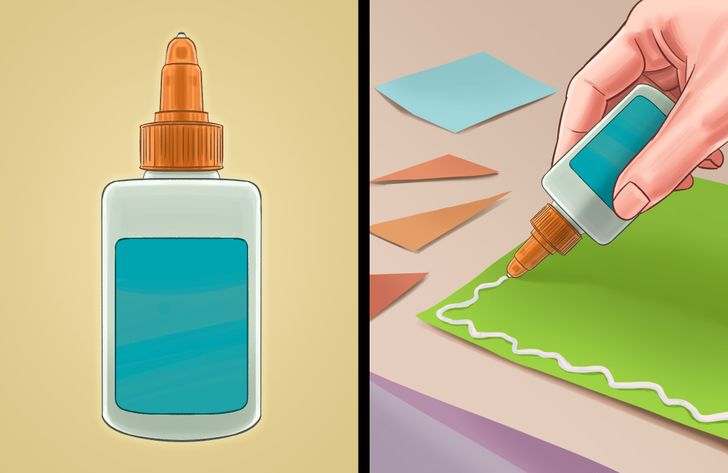
Polyvinyl Acetate glue, also known as PVA, is a synthetic polymer glue produced with a water base. It has very low toxicity and can be used by both adults and children.
This glue dries quite fast (the time of bonding the parts is no more than 1 hour, although the full drying process can take up to 24 hours). It’s also easy to remove it from hands and clothes if it accidentally gets on them.
What it’s best for: joining of light materials like cardboard, paper, fabric, various elements used in kids’ handicrafts. Also, PVA can be used on wooden and leather surfaces, and for gluing wallpaper, vinyl, and book covers.
Cyanoacrylate glue (superglue)
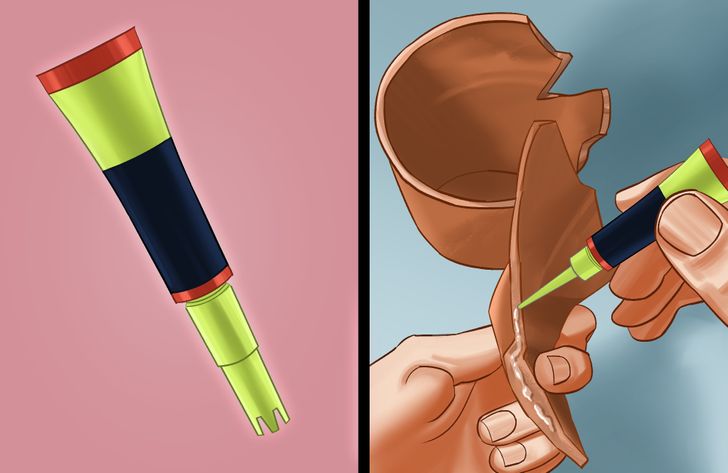
Cyanoacrylate glue is the glue that dries quickly and adheres tightly to various surfaces. It sets almost instantly (it usually takes about 30 seconds) and is waterproof. However, if you accidentally get it on your hands, it can also glue your fingers, so you should be careful when working with it.
What it’s best for: It will work best on porous materials though it can bond smooth surfaces as well. It can be used on metal, wood, resin, ceramic, glass, tile, concrete, PVC, fiberglass, fabric, leather, paper, and most plastics. It’s not suitable for Styrofoam and adheres poorly to smooth plastic.
Polyurethane glue
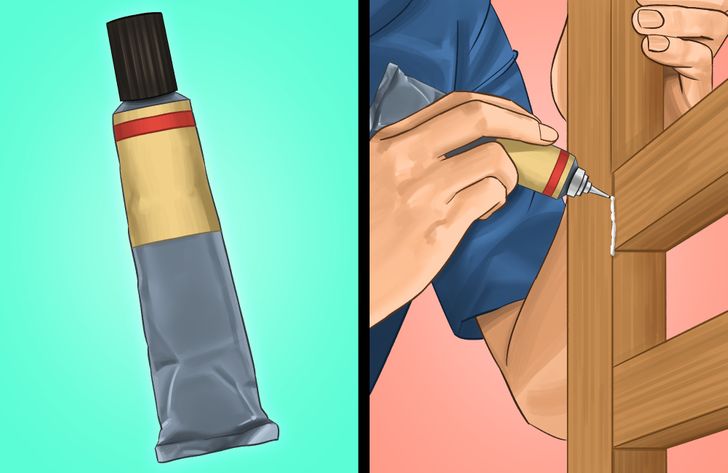
Polyurethane glue has a polymer base and possesses thermosetting properties, thanks to which, it works well on almost any surface. After drying, it can either become rigid or remain quite plastic (depending on the type of glue). When applied to porous surfaces, the polyurethane adhesive can expand and provide an even stronger hold. However, this property also requires caution when using the glue because when expanding, the adhesive can cause damage to some materials.
Polyurethane adhesive is highly durable and waterproof. It usually takes several hours (usually 6 to 8) to cure. It can be removed with a solvent such as mineral spirits or acetone before complete curing. Dried glue can be sanded.
What it’s best for: This type of adhesive is universal and can be used for bonding materials like wood, plastic, metal, rubber, glass, tile, concrete, ceramic, PVC, fabric, leather, and much more.
It’s better to not use polyurethane glue on greasy and oily surfaces or for bonding silicone, polypropylene, Teflon, or polyethylene.
Epoxy resin
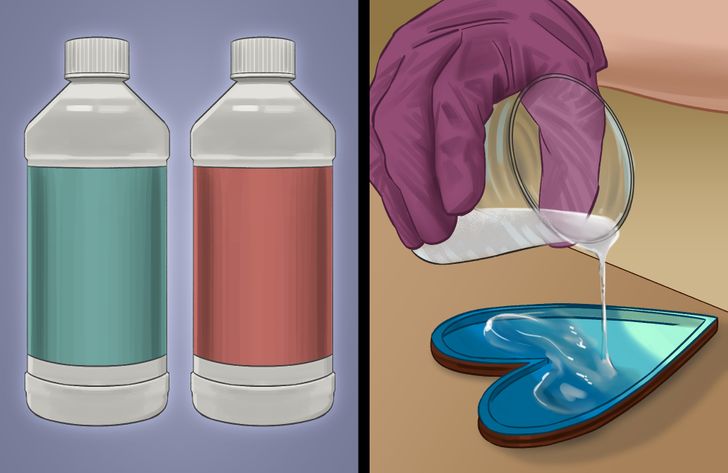
Epoxy resin is a 2-part glue that requires equal amounts of resin and hardener to be mixed together. It’s one of the most universal types of adhesive as it can bond almost any type of material regardless of its structure (porous or non-porous). Epoxy resin is waterproof, solvent and temperature resistant, and it has high strength and can withstand very heavy weights. When using epoxy, it is important to evenly mix its components in order to get a good result when gluing.
What it’s best for: Epoxy resin can be used with wood, metal, glass, tile, concrete, PVH, ceramic, and many other materials. Apart from that, epoxy resin is widely used in handicrafts.
It’s not recommended to use this type of glue together with rubber, vinyl, acetate, plexiglass, and silicone as there are more suitable options available for bonding them.
Silicone glue
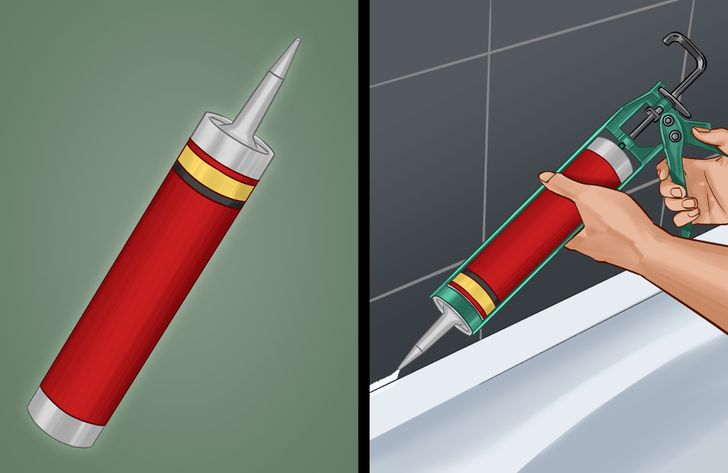
Silicone adhesive is highly durable and works well under pressure, which is why it is often used as a liquid sealant. It remains flexible and effective against temperature fluctuations (retains its properties from −70 to 570°F), can be used in places with high humidity, and firmly bonds non-porous surfaces.
What it’s best for: This type of adhesive can be used for bonding many types of material. Still, it works best on smooth surfaces like glass, ceramic, plastic, and metal. Resistance to temperature fluctuations makes this adhesive perfect for outdoor use.
Hot glue
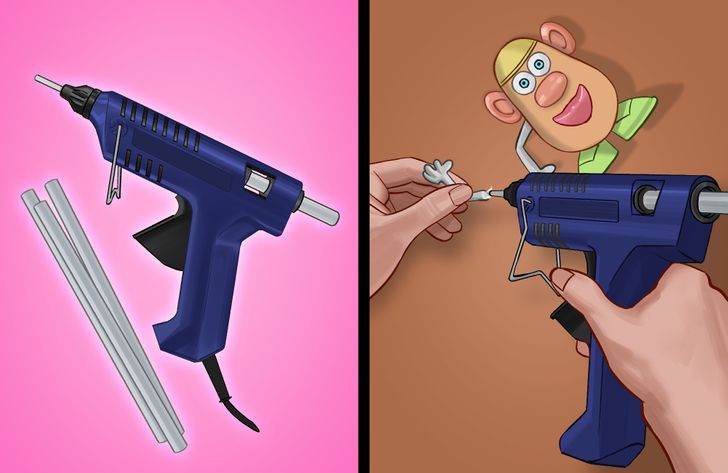
Hot glue is easy to use and is waterproof. However, it is sensitive to solvents and temperature fluctuations, and cannot withstand significant weight or pressure.
This type of adhesive is capable of working on both porous and non-porous surfaces, and it dries and hardens quickly.
What it’s best for: It can be used for bonding almost anything besides metal, taking into account the fact that it cannot handle a lot of pressure.
Glue stick
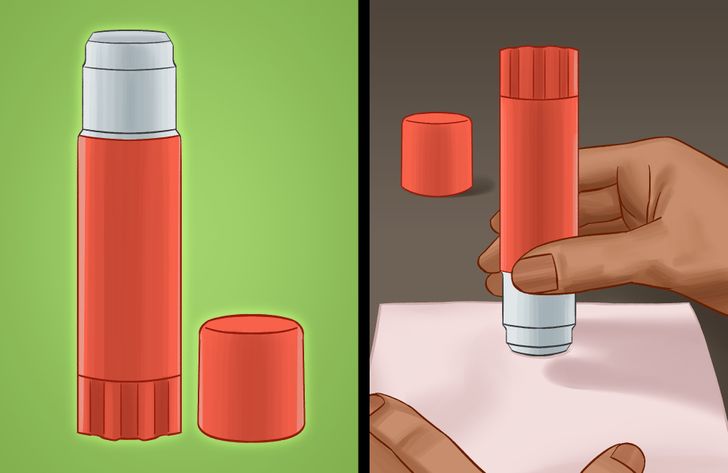
A glue stick is a non-toxic adhesive that can be applied easily and dries quickly, though it’s not a strong bonding agent. It is not resistant to extreme temperatures, UV radiation, humidity, or solvents.
What it’s best for: It’s good for bonding paper and cardboard elements, sealing envelopes, and labeling. This adhesive is not suitable for gluing complex and very porous materials.